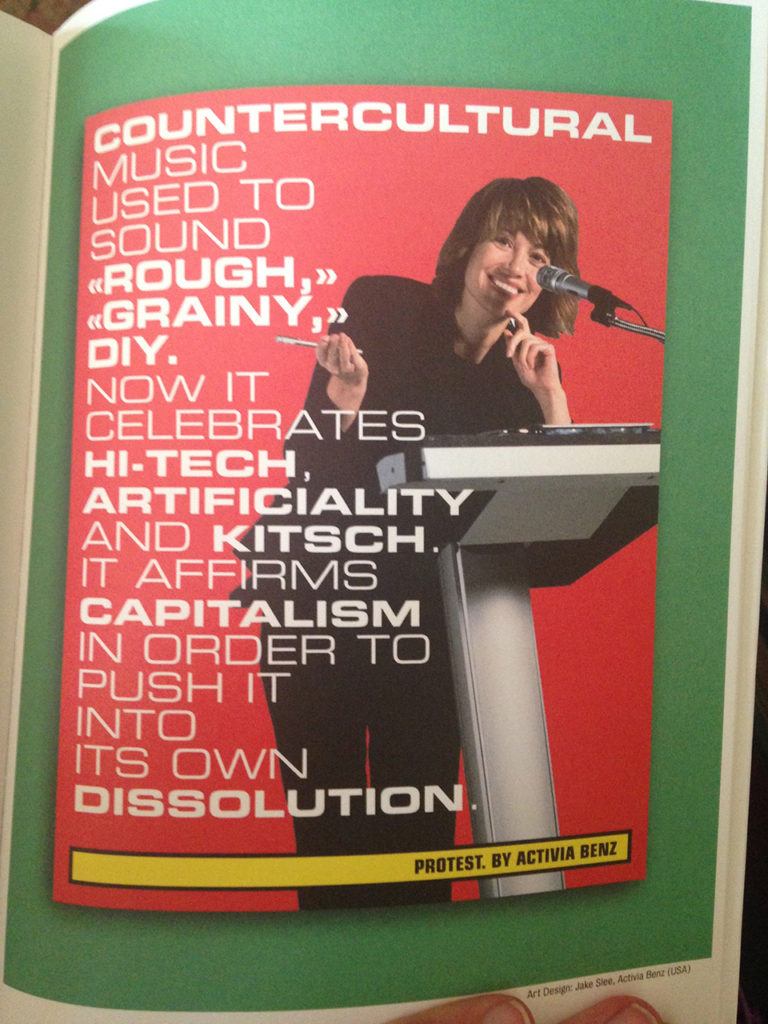More music is being produced today than ever before. Cheaper software and production costs; the ferocious circulation of sound and imagery on social media; and increasing online access to a kaleidoscope of spaces, politics, and texts from across the world, have all contributed to this cultural revolution. “Music”, ethnomusicologist Thomas Burkhalter tells us, “is changing on every level — in its production, financing, promotion, distribution, and even its shapes and formats”. This means that those of us who engage with music, whether as artists, bloggers, journalists, or academics, need new ways of thinking and speaking about current sound.
For some, the ever-escalating numbers of bedroom producers and sound archivists, are testament to sinking standards in contemporary music. There is a regularly-repeated refrain that the music of today can never compete with the always-richer, always-more-authentic sounds of the generations preceding us. This is what makes Seismographic Sounds — Visions of a New World such an important book: it takes seriously the products and producers of contemporary music culture. Not only does the book seek to engage with an immense prism of new music production, it also treats these splintered sound bytes as social mirrors —refracted shards of our contemporary humanity. “Music and video clips”, it tells us, “are the seismographs of today. Overall these tracks, songs, compositions and musical clips express what is thinkable and doable. They are direct, urgent, passionate, strong, yet fragile visions of a new world”.

Thursday 6th of October marked the Johannesburg launch of Seismographic Sounds. The book, edited by Thomas Burkhalter, Theresa Beyer and Hannes Liechti, is a project of the Norient collective — a network dedicated to exploring, engaging, and critiquing emerging music and media culture from around the world. In order to compile Seismographic Sounds, 250 scholars, journalists, bloggers and musicians from 50 countries presented and discussed an ocean of contemporary artistic expressions. The sounds and snippets presented in the book have often been produced in small makeshift studios from Cape Town, to Helsinki, Jakarta to La Paz. The book deliberately explores new material produced within the last two years, thereby urging writers to make sense of a world in-the-making, one which often transgresses musical canons. In selecting works to engage, the editors have focused on popular music and experimental niche music scenes, giving special attention to the sonic inventiveness of Africa, Asia, and Latin America.
In a world where internet access, travel, conflict and immigration have given way to increasingly permeable borders, musicians in this book are engaging new questions of place and identity. Their work reflects a “changing geography of multi-layered modernities, far beyond old ideas of North versus South, West versus East”. This is the music of loneliness in an antisocial world and the volatile search for attachment. It is the rendering of old and new cultural stereotypes. It is a sonic defiance of definition, transgressing set confines of sexuality, consumerism, and nation. Where people are multi-spatial and multi-layered, sound offers many an ethereal home. “The sounds of places become more polyphonic. Musicians create their home countries anew: through focus on international niche genres, parodies on exotica, post-digital visions, noisy protests against commercialism and propaganda”.

The Johannesburg launch event for Seismographic Sounds featured live performances from experimental artists, STASH CREW, Fortune Shumba and Hlasko. This was preceded by a panel discussion between editor Thomas Burkhalter, arts journalist Percy Mabandu, and musician/performer Umlilo. Interrupting their scattered, but rich discussions of local music-making were a series of selected video clips from the book. Indeed, contemporary music is marked by growing sensitivity to the visual, the image, and the performance. As Mabandu tells us, “musicians today are as much the artist as they are the artwork”. Our viewing included a snippet from DJ Khoisan, whose work Protein Shake offers a glitchy generational time capsule: a South African coming-of-age story set to 90’s neon fuzz. Next, a spliced film reel from Ghanaian music duo FOKN Bois. The video for BRKN LNGWJZ is an expert compilation of linguistic, sonic, and visual references that explore the contradictory abundance of an African metropolis. Umlilo reflected on an audio-visual offering of his own: Uzabalazo, off the LP Aluta. Through poetic juxtaposition of post-apartheid imagery, the video plays with personal sites of connection and disconnection, whether to a struggle, a place, or a sense of meaning. Blurring the everyday and the surreal, it wrestles with the collision and overflow between parallel social worlds. Indeed, Umlilo is recognised for the arresting fluidity of his artistry — mercurial in his style, genre and gender. While photographing the artist for Seismographic Sounds, Dylan Culhane was urged to reflect on the porousness and heterogeneity of contemporary selfhood: “a sense of multiplicity — of being more than one thing at any given time — is the prevailing narrative of our age”.
As such, Seismographic Sounds is multi-authored, multi-local, multi-media and multi-disciplinary. Like the artists it showcases, the book seeks to capture contemporary modernity in all its multiplicity. And like the artworks, it comes as a beautiful assemblage of unfinished fragments that, when read together, offer new ways of seeing and hearing a world in flux. As Mabandu tells us, “music is often about trying to make cohesive sense of this madness called life”.
Seismographic Sounds is a refreshing work. While so much of today’s music writing renders the personalities, record labels, releases, and endorsements that propel the music industry, far too little writing seeks to understand the sounds of our time. This book, and the creative critical engagements surrounding it, might be one way to spur public discourse about contemporary music. How might we understand music as a source of insight into who we are, who we were, and who we hope to be?



















































